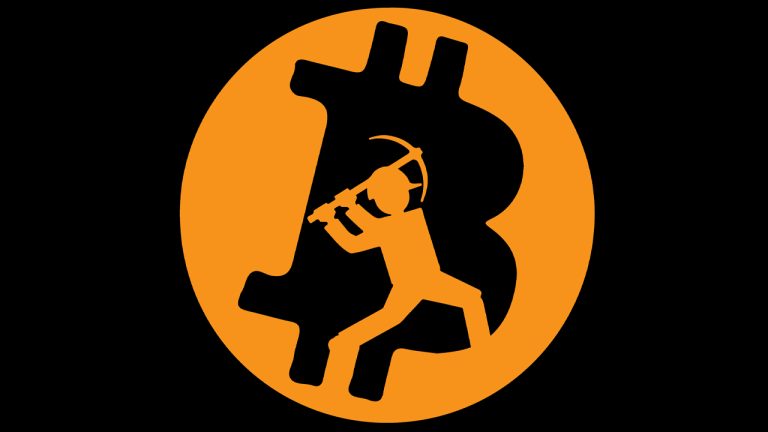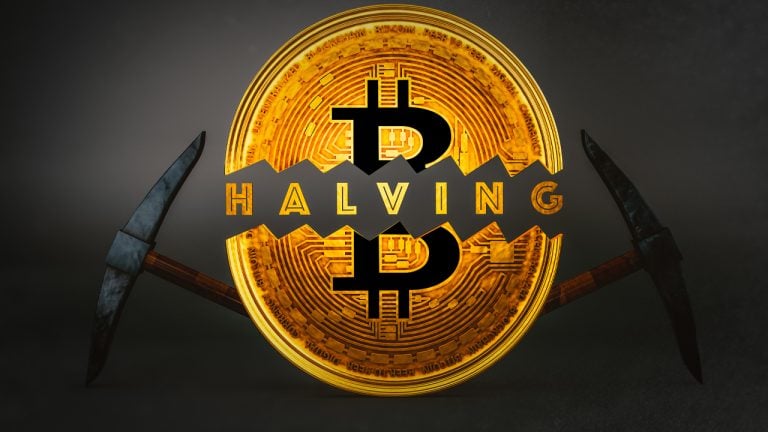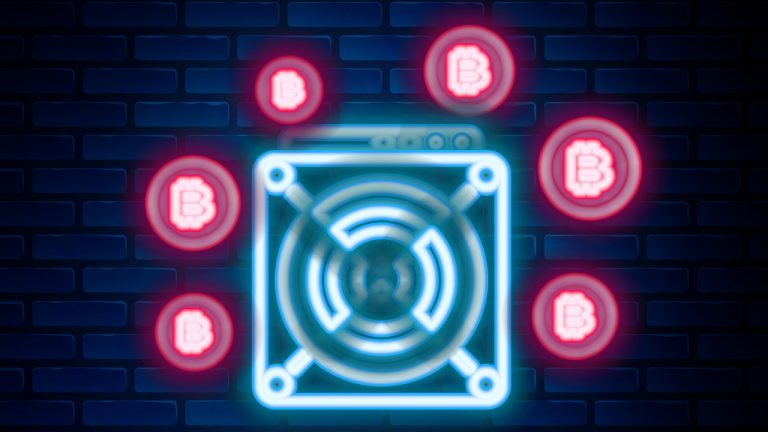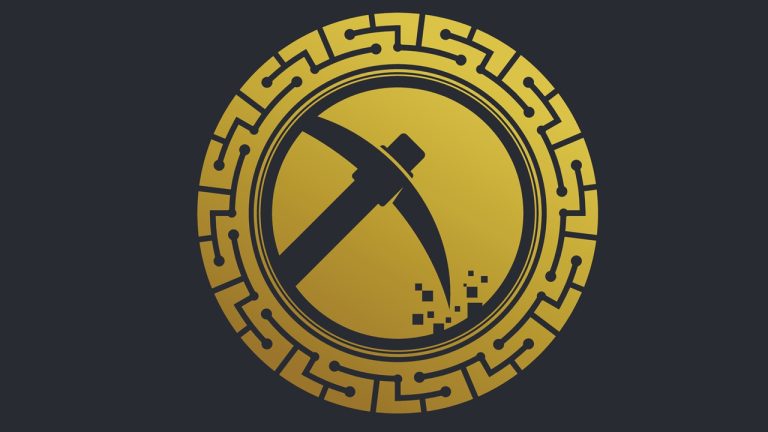 Stronghold Digital, a leading Bitcoin mining firm, announced the company has entered into a two-year hosting agreement with Cantaloupe Digital LLC, a subsidiary of the bitcoin application-specific integrated circuit (ASIC) manufacturer, Canaan. Under the new partnership, Stronghold Digital plans to activate 2,000 Avalon A1346 miners and 2,000 A1246 models. This will result in a total […]
Stronghold Digital, a leading Bitcoin mining firm, announced the company has entered into a two-year hosting agreement with Cantaloupe Digital LLC, a subsidiary of the bitcoin application-specific integrated circuit (ASIC) manufacturer, Canaan. Under the new partnership, Stronghold Digital plans to activate 2,000 Avalon A1346 miners and 2,000 A1246 models. This will result in a total […] Bitcoin’s network has been putting miners through the wringer lately, with five straight difficulty increases that had them on edge. However, on May 4, 2023, at block height 788,256, the network difficulty level took a dip, dropping by 1.45% and bringing the overall difficulty down to 48.01 trillion for the next two weeks. Bitcoin Difficulty […]
Bitcoin’s network has been putting miners through the wringer lately, with five straight difficulty increases that had them on edge. However, on May 4, 2023, at block height 788,256, the network difficulty level took a dip, dropping by 1.45% and bringing the overall difficulty down to 48.01 trillion for the next two weeks. Bitcoin Difficulty […] While the next difficulty change for Bitcoin is just two days away, the network’s hashrate soared to unprecedented heights, reaching 491.15 exahash per second (EH/s) on May 02, 2023, at block height 787,895. This staggering amount of computational power came tantalizingly close to a half zettahash or five hundred quintillion hashes per second. Bitcoin’s Hashrate […]
While the next difficulty change for Bitcoin is just two days away, the network’s hashrate soared to unprecedented heights, reaching 491.15 exahash per second (EH/s) on May 02, 2023, at block height 787,895. This staggering amount of computational power came tantalizingly close to a half zettahash or five hundred quintillion hashes per second. Bitcoin’s Hashrate […]
The blockchain industry is facing a massive power imbalance — just like the traditional finance industry.
Blockchain technology was introduced in 2008 as a decentralized, secure, transparent system for managing digital transactions. Its primary aim was to provide a solution to major problems with traditional transactional systems, including trust, security, decentralization and efficiency. Blockchain has since expanded beyond finance and has been used in supply chain management, healthcare, games, digital media and social media, among others.
However, the blockchain industry is still facing significant challenges — such as a lack of diversity, wealth control by a few holders, hash rate problems and a loss of the promise of decentralization.
The cryptocurrency on everyone’s mind — and in the digital wallets of more than 400 million people around the world — is Bitcoin (BTC). Bitcoin’s hash rate is the computing power required to validate transactions and produce new blocks on the Bitcoin blockchain. A high hash rate is necessary to maintain the integrity of the Bitcoin network, but it also presents some significant challenges.

One of the most pressing issues is the high energy consumption required to maintain a high hash rate. As more miners join the network, the hash rate increases — and so does the energy consumption required to sustain it. The environmental impact of BTC mining has led to concerns throughout Bitcoin’s volatile history and rise to mainstream fame.
Another challenge with Bitcoin’s hash rate is the centralization of mining power in a few large mining pools. As the hash rate has increased over time, it has become increasingly difficult for individual miners to compete with these large pools, leading to concerns about the potential for these pools to monopolize the network and control the direction of Bitcoin’s development.
Related: Elizabeth Warren wants the police at your door in 2024
There is also the potential for 51% attacks by mining pools that control the majority of the hash rate. If a single mining pool or a group of mining pools controls over 50% of the hash rate, they could potentially control the network and carry out malicious activities, such as double-spend attacks or rewriting transaction histories. This presents a significant threat to the security and integrity of the Bitcoin network.
Finally, the limited scalability of the Bitcoin network is another challenge associated with its hash rate. As more users join the network and the number of transactions increases, the network can become congested, leading to slow transaction times and high fees. This can limit its utility as a viable payment system and has led to ongoing debates within the Bitcoin community about how to address these scalability challenges.
The blockchain industry has quickly fallen into a massive imbalance of power, mirroring the traditional finance industry. The concentration of wealth and power within a small group of individuals has created an industry that is far from decentralized. Those who were early adopters of blockchain technology, particularly Bitcoin, were able to accumulate large amounts of wealth through mining, investing and trading.
This has led to a concentration of wealth and power within a small group of individuals. The complexity of blockchain further limited early adoption to a minuscule percentage of people in the tech world. This concentration of power and wealth has made it difficult for new players to enter the market and challenge the dominance of established players.

The high barriers to entry have also contributed to the imbalance of power in the blockchain industry. The cost of setting up and running a successful blockchain project can be significant, and not everyone has the resources or expertise to do so. This has made it difficult for new startups to enter the market and challenge the dominance of established players.
Network effects also play a role in the imbalance of power in the blockchain industry. Blockchain networks rely on network effects, which means that the value of the network increases as more people use it. This creates a self-reinforcing cycle where established networks become increasingly dominant, making it harder for new networks to gain traction.
Despite the challenges facing the blockchain industry, there are ways to address these issues and create a more sustainable, equitable system.
One of the most pressing issues with Bitcoin’s hash rate is its high energy consumption. To address this, the industry could move toward using renewable energy sources, such as wind or solar power, to power mining operations. This would not only reduce the environmental impact of Bitcoin mining but also make it more sustainable in the long run.
Related: CBDCs will lead to absolute government control
To address the issue of limited scalability in the Bitcoin network, efforts should be made to improve the underlying technology. This could include the development of new protocols or the adoption of existing protocols, such as the Lightning Network, which could significantly improve the speed and efficiency of Bitcoin transactions.
Finally, greater efforts should be made to educate people about blockchain technology and its potential. This could be achieved by providing greater access to information and resources, offering training programs and workshops, and working with educational institutions to integrate blockchain into their curricula.
This article is for general information purposes and is not intended to be and should not be taken as legal or investment advice. The views, thoughts and opinions expressed here are the author’s alone and do not necessarily reflect or represent the views and opinions of Cointelegraph.
 Bitcoin miners are contending with the fifth network difficulty increase since February 24, 2023, following a 1.72% rise on April 20 at block height 786,240. The network’s difficulty now stands at 48.71 trillion, marking a 22.62% increase over the last 55 days since block height 778,176. Bitcoin’s Difficulty Has Risen More Than 22% Since Block […]
Bitcoin miners are contending with the fifth network difficulty increase since February 24, 2023, following a 1.72% rise on April 20 at block height 786,240. The network’s difficulty now stands at 48.71 trillion, marking a 22.62% increase over the last 55 days since block height 778,176. Bitcoin’s Difficulty Has Risen More Than 22% Since Block […] On April 6, 2023, Bitcoin’s difficulty rose 2.23% higher at block height 784,224, touching another all-time high. It’s the fourth consecutive difficulty increase on the Bitcoin network since Feb. 24, and the protocol’s current difficulty is 47.89 trillion, which is only 2.11 trillion away from reaching the 50 trillion range. Bitcoin Difficulty Jumps 2.23% Higher […]
On April 6, 2023, Bitcoin’s difficulty rose 2.23% higher at block height 784,224, touching another all-time high. It’s the fourth consecutive difficulty increase on the Bitcoin network since Feb. 24, and the protocol’s current difficulty is 47.89 trillion, which is only 2.11 trillion away from reaching the 50 trillion range. Bitcoin Difficulty Jumps 2.23% Higher […]
With a new quarterly production record, Marathon Digital is now on track to meet its mid-year target of 23 exahashes.
Bitcoin (BTC) mining firm Marathon Digital has reported a quarterly record of 2,195 BTC mined over the first quarter of 2023, currently worth around $62 million.
Marathon reported in an April 3 update that the 2,195 mined BTC is a 74% increase from the first quarter of last year and a 41% increase from Q4 2022.
It comes on the back of the miner increasing its operational hash rate by 195% from Q1 2022.
Marathon also recorded a monthly record of 825 BTC mined in March — currently valued at around $23.3 million — and marked a 21% production increase from February.
$MARA's March Production Update is here:
— Marathon Digital Holdings (NASDAQ: MARA) (@MarathonDH) April 3, 2023
- Increased #Bitcoin Production 21% MoM
- Produced a Record 825 BTC in March ’23
- Produced a Record 2,195 BTC in Q1 ’23
- Increased Hash Rate 64% in Q1 ’23 (11.5 EH/s)
- Reported Unrestricted Cash and Cash Equiv. of $124.9M
- Increased… pic.twitter.com/Jc1ACI2kY2
In a statement, CEO Fred Thiel said Marathon made “notable progress” on executing its two primary initiatives for 2023 — to energize its previously purchased mining rigs to reach 23 exahashes by the end of the second quarter and to optimize performance.
The firm is now exactly on target, having increased its operational hash rate from 7.0 exahashes on Jan. 1 to 11.5 exahashes as of March 31.
Marathon’s management attributed the increase in efficiency to it bringing online 25,900 Bitcoin miners based in various facilities in North Dakota, bringing its fleet to 105,200 mining rigs as of April 1.
Marathon explained its operational improvements cleaned up part of its balance sheet by wiping out $50 billion in debt in addition to repaying its loan back to the now-failed Silvergate Bank:
“We reduced our debt by $50 million and increased our unrestricted Bitcoin holdings by 3,132 Bitcoin after we prepaid our term loan and terminated our credit facilities with Silvergate Bank.”
The firm finished the quarter with approximately $124.9 million in unrestricted cash and cash equivalents, and 11,466 BTC, which equates to over $450 million.
Marathon noted the figures have not been audited.

Related: Bitcoin ASIC miner prices hovering at lows not seen in years
Marathon expects operational efficiencies to continue having purchased a new batch of Antminer S19 XPs Bitcoin mining rigs that are said to be nearly 30% more efficient than the Antminer S19 Pro.
Once those miners are installed approximately 66% of Marathon’s hash rate will come from the S19 XPs, it said.
The design of S19 XPs has, however, been criticized by fellow Bitcoin mining firm Compass Mining.
In a March report the firm identified “three flaws” of the new S19s which may result in the mining rig overheating, or in some cases, shutting down completely.
Magazine: Hodler’s Digest: FTX EU opens withdrawal, Elon Musk calls for AI halt, and Binance news
 According to current statistics, the Bitcoin network is fewer than 56,000 blocks away and less than 400 days away from the next reward halving. After the next halving, the block reward will be reduced by 50%, and the current block subsidy of 6.25 bitcoins will drop to 3.125 bitcoins per block post-halving. In addition to […]
According to current statistics, the Bitcoin network is fewer than 56,000 blocks away and less than 400 days away from the next reward halving. After the next halving, the block reward will be reduced by 50%, and the current block subsidy of 6.25 bitcoins will drop to 3.125 bitcoins per block post-halving. In addition to […] Despite Bitcoin’s difficulty reaching an all-time high at 46.84 trillion, participants in bitcoin mining have kept the hashrate running stronger than ever before. According to statistics, on March 23, 2023, the hashrate reached a high of 400 exahash per second (EH/s). The 400 exahash equates to 0.4 zettahash or four hundred quintillion hashes per second. […]
Despite Bitcoin’s difficulty reaching an all-time high at 46.84 trillion, participants in bitcoin mining have kept the hashrate running stronger than ever before. According to statistics, on March 23, 2023, the hashrate reached a high of 400 exahash per second (EH/s). The 400 exahash equates to 0.4 zettahash or four hundred quintillion hashes per second. […] On March 23, 2023, bitcoin experienced another difficulty increase, following two previous rises in the last month, jumping 7.56% higher. Currently, bitcoin miners have not been deterred by the increases, as the network hashrate has been coasting along at 346 exahash per second (EH/s). Bitcoin Hashrate Remains High Despite Recent 7.56% Difficulty Rise As of […]
On March 23, 2023, bitcoin experienced another difficulty increase, following two previous rises in the last month, jumping 7.56% higher. Currently, bitcoin miners have not been deterred by the increases, as the network hashrate has been coasting along at 346 exahash per second (EH/s). Bitcoin Hashrate Remains High Despite Recent 7.56% Difficulty Rise As of […]